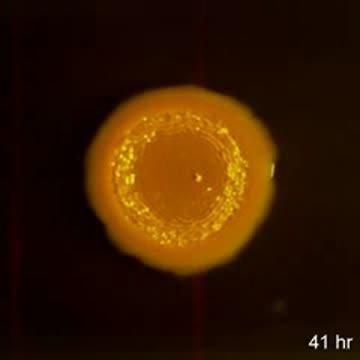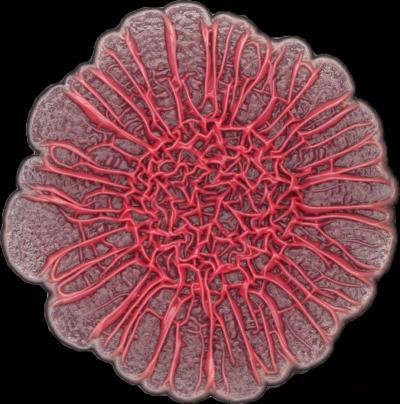Cells, Dietrich explains, mediate their physiological activities using secreted molecules. The team looked specifically at phenazines, which are secreted metabolites that control gene expression. Their study found that the bacterial colonies produced a phenazine gradient that, they say, is likely to be of physiological significance and contribute to colony morphogenesis.
"This is a big step forward," Dietrich continues. "We describe using this chip to 'listen in' on conversations taking place in biofilms, but we are also proposing to use it to interrupt these conversations and thereby disrupt the biofilm. In addition to the pure science implications of these studies, a potential application of this would be to integrate such chips into medical devices that are common sites of biofilm formation, such as catheters, and then use the chips to limit bacterial colonization."
The next step for the team will be to develop a larger chip that will enable larger colonies to be imaged at higher spatial and temporal resolutions.
"This represents a new and exciting way in which solid-state electronics can be used to study biological systems," Shepard adds. "This is one of the many emerging ways integrated circuit technology is having impact in biotechnology and the life sciences."

The development of colony biofilms by Pseudomonas aeruginosa is affected by redox-active compounds called phenazines. A phenazine-null mutant forms a hyperwrinkled colony with prominent spokes, while wild-type colonies are more constrained and smooth.
(Photo Credit: Yu-Cheng Lin, Columbia University)

The development of colony biofilms by Pseudomonas aeruginosa is affected by redox-active compounds called phenazines. A phenazine-null mutant forms a hyperwrinkled colony with prominent spokes, while wild-type colonies are more constrained and smooth.
(Photo Credit: Hassan Sakhtah, Columbia University)
Source: Columbia University School of Engineering and Applied Science